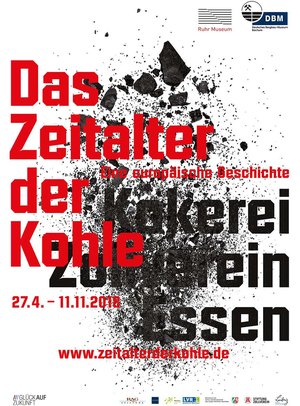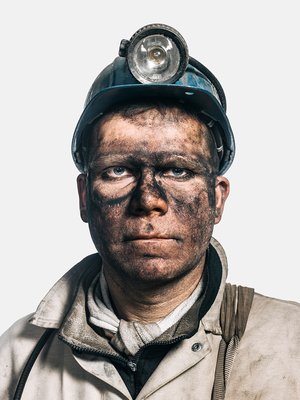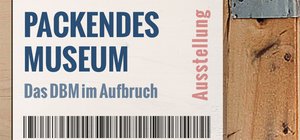Past special exhibitions
The special exhibitions at the Deutsche Bergbau-Museum Bochum are on display for a limited time only. However, in this archive you can get an overview and information about already past special exhibitions.

For the first time in the history of the Leibniz research museum, a special exhibition is dedicated to the subject of environmental policy and recultivation: “Let the dust settle… Mining and the environment: a German-German comparison“ (“Gras drüber … Bergbau und Umwelt im deutsch-deutschen Vergleich”) seeks to use a historical perspective to arrive at a reflective response to environmental issues, both current and future. The exhibition can be viewed from 11 June 2022 to 15 January 2023 in the DBM+ extension building.
The special exhibition “Let the dust settle… Mining and the environment: a German-German comparison” in the Deutsches Bergbau-Museum Bochum takes a look beneath the grass-covered surface. It explores three natural resources and two countries: hard coal mining in the FRG, and opencast lignite mining in Lusatia, as well as uranium ore extraction in the Wismut districts of the GDR Part of a joint project funded by the Federal Ministry of Education and Research (BMBF), it presents a “German-German” comparison from a historical environmental and mining perspective with a regional focus. In doing so, it reveals the symbiotic interrelationships played out on a political, scientific and society level.
Click here to go to the exhibition page.
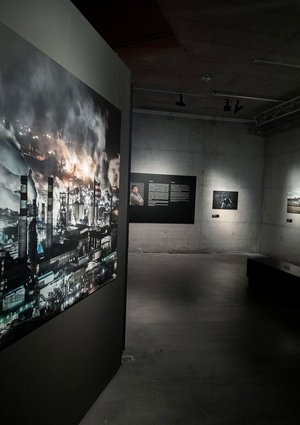
„There’s only one planet earth, which we share” – Chinese photographer Lu Guang (*1961) came to this conclusion through his work. Lu Guang engages with the socio-economic and ecological issues of industrial China. The country, which has no oil reserves of its own, produces and consumes more coal than any other nation on earth.
“Black Gold and China. Photographs by Lu Guang“ is Lu Guang’s first solo exhibition in Germany. It provides an insight into the work of one of the most important Chinese photographers. The Deutsches Bergbau-Museum Bochum is extending its special exhibition "Black Gold and China. Photographs by Lu Guang" until 24 April 2022. The exhibition with more than 100 photographs by one of China's most important photographers is his first monographic show in Germany.
Click here to go to the exhibition page.
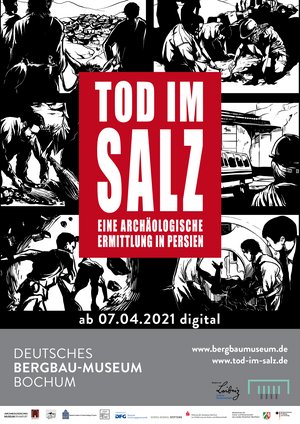
Vom 08. Juni bis 08. August 2021 können Besuchende die Sonderausstellung „Tod im Salz. Eine archäologische Ermittlung in Persien“ des Deutschen Bergbau-Museums Bochum vor Ort erleben. Die Ausstellung wurde bis zum 12. September 2021 verlängert. Sie wurde bereits am 07. April 2021 digital eröffnet und ist über www.tod-im-salz.de zugänglich.
Die Ausstellung thematisiert die ‚Salzmänner von Zanjān‘. Diese im Salz mumifizierten Menschen wurden gemeinsam mit zahlreichen anderen Funden bei Ausgrabungen im antiken Salzbergwerk von Chehrābād entdeckt. Erleben Sie, wie Forschung funktioniert und zu welchen Ergebnissen sie gelangt. Eine Graphic Novel zeigt Leben und Tod des jungen Bergmannes – ‚Salzmann 4‘ – vor 2.400 Jahren. Die Ausstellung erlaubt Einblicke in vergangene Lebens- und Arbeitswelten. Entstanden ist die Ausstellung in enger Zusammenarbeit mit dem Archäologischen Museum Frankfurt, dem Iranischen Nationalmuseum Teheran und dem Salzmann und Archäologisches Museum Zanjān.
Zur Ausstellungsseite gelangen Sie hier.
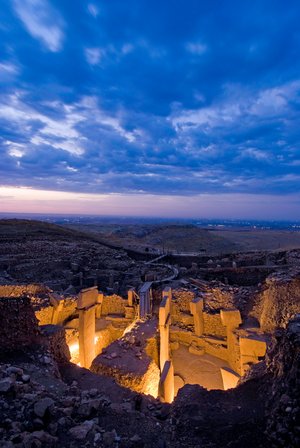
Der Forschungsbereich Archäometallurgie des Deutschen Bergbau-Museums Bochum zeigt vom Mittwoch, 30. Oktober 2019 bis Freitag, 27. Februar 2020 in enger Kooperation mit dem Türkischen Generalkonsulat Essen die Fotoausstellung „Göbekli Tepe und die ältesten Monumente der Menschheit“.
Göbekli Tepe, eine der wichtigsten archäologischen Entdeckungen der letzten Jahre, befindet sich im Südosten der Türkei in einem Gebiet, wo vor gut 12.000 Jahren wesentliche Elemente unserer heutigen Zivilisation ihren Anfang nahmen. Gegen Ende der letzten Eiszeit vollzogen sich in Vorderasien mit dem Übergang vom Jäger- und Sammlertum zu der durch Sesshaftigkeit und Nahrungserzeugung bestimmten Lebensweise für die Menschen tiefgreifende Veränderungen, die eine neue Epoche, nämlich die neolithische Zeit der Menschheitsgeschichte einleitete. Göbekli Tepe mit der monumentalen, megalithischen Architektur befindet sich im Zentrum des Kerngebietes, wo herumziehende Jäger und Sammler sesshaft wurden.
In der Fotoausstellung werden Bilder der frühneolithischen Siedlung auf dem Göbekli Tepe gezeigt. Die gewaltigen Steinkreise aus monolithischen T-förmigen Pfeilern, die bis zu 5 m Höhe erreichen, sind bis heute ein Rätsel in der Archäologie.
Die Ausstellung wird durch eine wissenschaftliche Vortragsreihe begleitet.
- Adresse: Haus der Archäologien, Am Bergbaumuseum 31, 44791 Bochum
- Dauer: Mittwoch, 30. Oktober 2019 bis Freitag, 27. Februar 2020
- Eintritt frei
- Öffnungszeiten: Mo. bis Fr. von 9:00–16:00 Uhr
Zur Ausstellungsseite gelangen Sie hier.
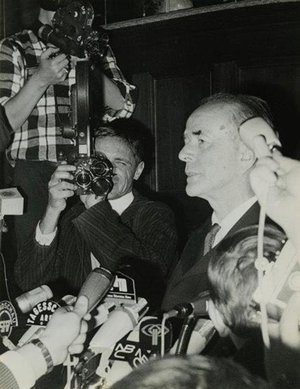
Albert Speer war in der NS-Zeit als erster Architekt des Reiches verantwortlich für Großprojekte wie das Reichsparteitagsgelände in Nürnberg und die Umgestaltung Berlins. Er zählte zu Hitlers engsten Vertrauten, 1942 wurde er Rüstungsminister. 1946 verurteilten ihn die Alliierten im Nürnberger Prozess zu zwanzig Jahren Haft. Nach seiner Entlassung konnte Speer durch zahlreiche Interviews und Publikationen seine bei Kriegsende entworfene und weiter ausformulierte Legende in die Öffentlichkeit tragen: Er hätte von den NS-Verbrechen nichts gewusst und sei, von der Aura Hitlers verführt, in Krieg und Judenmord unbeteiligt hineingeraten.
Die mit Unterstützung des Instituts für Zeitgeschichte München-Berlin erarbeitete Ausstellung des Dokumentationszentrums lässt die Speer-Legende und damit auch den Umgang der Deutschen mit ihrer Vergangenheit sichtbar werden. Im Mittelpunkt der Ausstellung steht die Frage, warum Speers Geschichten in der BRD so lange und bei so vielen Menschen Resonanz fanden – auch noch, als die Forschung vieles längst widerlegt hatte.
Informationen zur Ausstellung erhalten Sie hier.
Eine Gastausstellung des Dokumentationszentrums Reichsparteitagsgelände in Kooperation mit dem Leibniz-Institut für Zeitgeschichte München-Berlin.
Zur Ausstellungsseite gelangen Sie hier.
The Ruhr Museum in Essen and the Deutsches Bergbau-Museum Bochum stage their first joint exhibition to mark the end of coal mining in Germany. The exhibition is presented in the UNESCO World Heritage Site Zollverein which for many years was the largest colliery in Europe. The museums feature comprehensive social and/or technical-historical collections, covering the history of colliery mining in the Ruhr Area which are now jointly on display in one exhibition. With their exhibits more than 100 international lenders complete the total of more than 1,200 objects on display.
Among them is the original contract of the “European Coal and Steel Community” (ECSC), on loan from the National Archives of Luxembourg. Founded in 1951, the ECSC was the first and decisive step towards the European Union. Other exhibits include paintings and busts, mining relics and heavy machines, photographs and films, flags, a historic wallpaper from the Musées Gadagne in Lyon and original samples of the first synthetic colours made from coal.
Additionally, a gigantic “Dark Star” floats in the central bunker of the exhibition, an art installation specifically created for the exhibition by British Artist Jonathan Anderson. The exhibition is accompanied by a comprehensive cultural, educational and event programme consisting of an excellent series of lectures offering a European perspective on coal mining in the Deutsches Bergbau-Museum Bochum and an extensive series of international films on mining. Additionally, several excursions will be offered to original mining sites not only in the Ruhr Area but also to other German and European coal mining districts, including trips to the Aachen and Saarland regions as well as to the World Heritage Sites of mining in Alsace-Lorraine, in Belgian Hainaut and in Nord-Pas-de-Calais. Combined tours of the Unesco World Heritage Site Zollverein and the Deutsches Bergbau-Museum Bochum will also be offered. A comprehensive, illustrated catalogue has been published for the exhibition at a price of EUR 24.95.
“The Age of Coal. A European History” is a joint exhibition of Ruhr Museum in Essen and Deutsches Bergbau-Museum Bochum. The exhibition is sponsored by the RAG-Stiftung as part of their “Glückauf Zukunft!” initiative.
To get to the site of the special exhibition The Age of Coal. A European History klick on this link.
Zum Ende des Steinkohlenbergbaus in Deutschland werden im Ruhrgebiet viele verschiedene, thematisch aufgebaute Fotografie-Ausstellungen gezeigt. Sie haben zumeist einen historischen Hintergrund oder beschäftigen sich mit speziellen Schwerpunkten des Bergbaus. Das Deutsche Bergbau-Museum Bochum präsentiert nun mit der Ausstellung „Blickpunkt Bergwerk. Fotografien von Michael Bader“ aktuelle Fotografien des gegenwärtigen Bergbaus und den darin arbeitenden Menschen.
Die Fotografien von Michael Bader wurden ursprünglich durch die RAG-Stiftung im Rahmen des Projekts „Glückauf Zukunft!“ beauftragt. Sie entstanden in den Jahren 2016/2017 auf den Zechen Auguste Victoria und Pluto sowie den noch aktiven Bergwerken Prosper-Haniel und Anthrazit Ibbenbüren in vielen verschiedenen Unternehmensbereichen der RAG Aktiengesellschaft. In Baders Serie „Oberirdisch“ entstanden so Fotos, die Mensch und Technik in ihrem Ist-Zustand zeigen und den aktuellen Steinkohlenbergbau repräsentieren. Als solches können sie heute schon als die historischen Aufnahmen von morgen interpretiert werden. Sie bilden einen Querschnitt durch den noch aktiven Steinkohlenbergbau. Michael Bader zeigt den Menschen in seinem Arbeitsumfeld, es sind intensive Momentaufnahmen mit Ewigkeitswert, verbunden mit persönlichen Biografien und trotzdem stellvertretend für einen eigenen Berufsstand und Industriezweig. Baders Fotos sind zeitgeschichtlich relevante Quellen im Abschiedsjahr vom Steinkohlenbergbau.
Der Künstler konzipiert und kuratiert die Ausstellung gemeinsam mit dem Leiter des Montanhistorischen Dokumentationszentrums Dr. Michael Farrenkopf.
Zur Sonderausstellungsseite „Blickpunkt Bergwerk. Fotografien von Michael Bader“ gelangen Sie über diesen Link.
Auch in der Zeit des Umbaus finden im DBM weiterhin Ausstellungen statt. Im Schwarzen Diamanten, dem DBM+, werden im November gleich zwei besondere Schauen eröffnet. In „Packendes Museum – Das DBM im Aufbruch“ beschäftigt sich das Haus mit sich selbst: Ab dem 08. November haben die Besucher in diesem besonderen Ausstellungsprojekt die Möglichkeit, die Geschichte des DBM zu bereisen: Von seinen Anfängen bis in die Zukunft – Deutsches Bergbau-Museum Bochum, das bedeutet fast ein Jahrhundert Forschen und Ausstellen rund um das Thema Bergbau.
Die Ausstellungsmacher haben sich in der Konzeption mit zentralen Fragen des Umbruchs beschäftigt: Was waren wir? Wer sind wir? Wie werden wir sein? Die Schau zeigt, wie sich aus der Entwicklung einer Vision über die Planung einer konkreten Idee bis hin zur Durchführung ein Museum seiner Zukunft nähert. Durch ein Schlüsselloch kann der Besucher anhand ausgewählter Exponate auf die neuen Rundgänge „spinksen“. In der DBM-Lounge im Untergeschoss gibt es zudem die Gelegenheit, sich das DBM der Zukunft vorzustellen und den Ausstellungsmachern die eigenen Wünsche und Ideen mitzuteilen.
Zur Sonderausstellungsseite Packendes Museum – Das DBM im Aufbruch gelangen Sie über diesen Link.
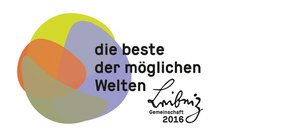
Die mehr als 100 Millionen Objekte in den Sammlungen der Leibniz-Forschungsmuseen sind ein immenser wissenschaftlicher Schatz, mit dem auch heute noch aktuelle Forschungsfragen beantwortet werden. Das zeigt die Ausstellung „8 Objekte, 8 Museen – eine simultane Ausstellung der Leibniz-Forschungsmuseen“, die erste gemeinsame Schau der acht Forschungsmuseen der Leibniz-Gemeinschaft.
Jedes der acht Museen präsentiert ein exemplarisches Objekt aus seiner Sammlung und gewährt damit beispielhaft Einblicke in seine Sammlungen und Forschungen. An jedem Museumsstandort wird das örtliche Objekt im Original zu sehen sein. Alle acht Exponate präsentieren sich auf dem vom Leibniz-Institut für Wissensmedien (IWM) entwickelten interaktiven Computer-Tisch und werden auf mehreren virtuellen Ebenen mit ihrer Forschungsgeschichte erläutert.
Das Deutsche Bergbau-Museum Bochum stellt für diese Ausstellung eines der frühesten und seinerzeit erfolgreichsten Instrumente zur Lebensrettung im Bergbau vor, das aus den Musealen Sammlungen des montan.dok stammt: den Dräger Rettungsapparat, Modell 1904/09 (Abb. 6). Viele Bergleute verdanken Geräten wie diesem ihr Leben, gleichzeitig steht es für grundlegende soziale Veränderungen im industriellen Bergbau.
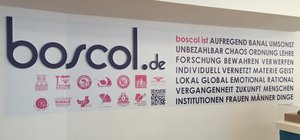
Thirteen scientific collections and archives from the Ruhr University Bochum and the Deutsches Bergbau-Museum (German mining museum) are on show in a new pop-up exhibition, in a showroom format that will allow visitors to get up close and personal with the historic artefacts on display.
Following on from the success of the boscol pop-up showroom on Bochum's main shopping stretch, the exhibition has moved from the Blue Square, the city centre exhibition base of the Ruhr University, to the museum.
This unconventional exhibition combines the curious and the exotic with the everyday, the known with the unknown, the artistic with the technical and the unique with the mass-produced. This kaleidoscopic experience is designed to awaken curiosity about the world of objects around us, and prompt visitors to ask surprising and exciting questions.
The 'lookbook' that accompanies the exhibition tells the stories behind the objects, answering some of these questions, and provides further background to the collections. Ample copies are available for visitors to use during their visit. For those wanting to look beyond the words on the page, QR codes provide access to fascinating background information in sound and film clips.
Visitors can also watch an interactive video created and published to YouTube by students at RUB to learn more about the people behind the collections. A geocaching task allows visitors to trace and discover the homes of the collections.
To get to the site of the special exhibition Pop up! − An exhibition by Bochum Scientific Collections (boscol) klick on this link.
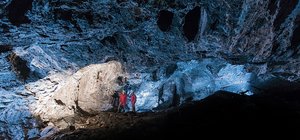
Today, the highest mountain range in Europe attracts millions of tourists each year, and it's easy to travel to or cross the Eastern Alps by plane, train or road. But this hasn't always been the case. Ten thousand years ago, the last Ice Age had come to an end, but the harsh climate, endless swathes of difficult terrain and the lack of a road network made travelling to the region an incredibly challenging prospect. So why did the people of that time choose to build their lives in this hostile environment?
To get to the site of the special exhibition Bergauf Bergab (Up hill and down dale) − 10,000 Years of Mining in the Eastern Alps klick on this link.
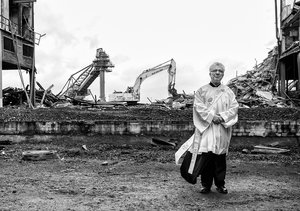
By the end of 2018, an era of Germany history will end: Germany’s subsidised hard coal mining industry will be over. For their photography project Keine Kohle mehr (“No more coal“), Thomas Stelzmann and Wolf R. Ussler, both from Düsseldorf, brought ex-coal miners back to the sites of their former mines and created images of these scenes. Their life stories form the essence of the photographs these artists have compiled and analysed. The stories reveal the realities and events that shaped the lives the people in the photographs and which often brought them meaning.
Ussler and Stelzmann frequently worked against the clock: many photos were taken just before or even as the mines were being demolished. Literally in the final minutes, the last images of a work site were snapped amidst the demolition equipment, where once thousands of men toiled for their daily bread. The goal of the photography project is not simply to document and preserve a memory of an industrial culture and its impact on the people that is virtually over. The project also aims to convey the structural changes taking place as the mining landscape makes way for a new one.
To get to the site of the special exhibition Keine Kohle mehr (No more coal) klick on this link.
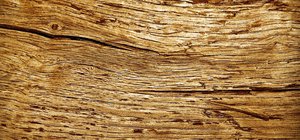
Anyone who has always been interested in archaeology and wonders why the collections contain so little wood, or how centuries-old iron can be returned to its splendent lustre, is cordially invited to this special exhibition.
Archaeological wood and iron are especially difficult to preserve: Although they sometimes last for millennia in the ground, they often begin to deteriorate immediately after their recovery. Wood shrinks and breaks if it is dried in an uncontrolled manner; iron shatters almost in slow motion due to the voluminous corrosion that begins in its interior.
This problem has been studied as part of the KUR research programme, a programme for the conservation and restoration of moveable cultural assets. The exhibition “shrinking wood, expanding iron” taken on by the German Maritime Museum in Bremerhaven introduces the problems surrounding the archaeological materials of wood and iron, as well as the various approaches to solutions discussed in the project for the first time in a manner comprehensible to laypeople.
To get to the site of the special exhibition Shrinking wood, expanding iron klick on this link.
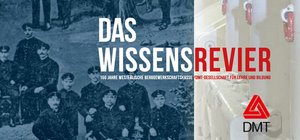
“Glückauf, der Steiger kommt!” – “The foreman’s coming!”, announces the traditional miners’ song. But where is he coming from? The mining school, of course!
1864 saw the founding of the Westfälische Berggewerkschaftskasse (WBK, Westphalian Miners’ Union Fund), the central training and scientific institution of the Ruhr mining industry. This was later succeeded by the DMT-Gesellschaft für Lehre und Bildung (DMT-LB, German Mining Society for Teaching and Training). Besides training for foremen and apprentices, and a programme of study for engineers, the WBK and DMT-LB dealt with the scientific foundations of mining in the Ruhr district, from research on explosions and the identification of different types of coal to surveying the world (from a mining perspective). The intellectual heritage of the Ruhr mining industry is still alive today, in the Deutsches Bergbau-Museum and the Technische Fachhochschule Georg Agricola, which are both funded by the DMT-LB. We will be presenting a special exhibition to mark the 150th anniversary of the WBK/DMT-LB.
To get to the site of the special exhibition Das Wissensrevier klick on this link.
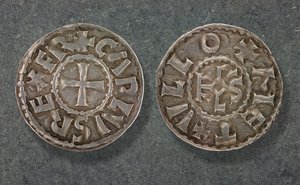
Charlemagne and Harun al-Rashid. Two charismatic medieval rulers, two major powers, two leading figures of a new era. For all their differences, there are also many parallels between the two: their structures, forms of government, and canons of values. Both rulers mark a high point for the peoples of their empires, not just in terms of power politics, but also in terms of civilization.
Between Aachen and Baghdad – 5000 km apart – a brilliant, dynamic tapestry of arts and sciences unfolds. Within the framework of the exhibition, the silver mining industry is used as an example to show different technologies which can be found at the same time in the Frankish and Abbasid empires. For example, while Frankish miners in Melle (France) used fire-setting to extract minerals, the Persian miners in ar-Radrad (Yemen) used only hammers and picks.
A comparison between the two technological and social contexts allows us to draw conclusions about the historical development of silver mining from an archaeological perspective.
To get to the site of the special exhibition Silver paths between Orient and Occident klick on this link.
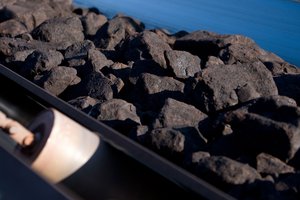
The travelling exhibition “Wertvolle Erde” is dedicated to geological raw materials and the way they are formed, and to the prospecting, extraction, use and recycling of those reserves which the earth has to offer.
The exhibition answers many questions: How are geological raw materials formed, and over what period of time? How are they searched for and found? How and where are they extracted today? What methods can be applied to make rational, effective use of deposits? Where are geological raw materials, especially ores, used in industry, and how can these raw materials be reused in a way that makes sense?
To get to the site of the special exhibition Valuable Earth − The treasure under the ground klick on this link.
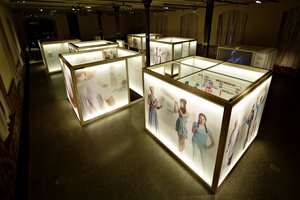
In the 'Science Year 2013', the Leibniz Association's exhibition "Zukunft leben – Die demografische Chance" (Live the future! The demographic opportunity) gave a vivid impression of how demographic change will affect our lives.
On the basis of researchers' findings and their proposed solutions, the nine sections of the exhibition showed how we will learn, work, create families, grow old, and live in the future.
To get to the site of the special exhibition Live the future! − The demographic opportunity klick on this link.
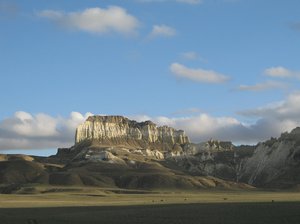
For many years, the Deutsches Bergbau-Museum Bochum has been running a joint project with Kazakh colleagues, mainly on ancient copper and tin mining in Kazakhstan. This was the inspiration for the exhibition.
850 m2 of exhibition space were used to portray an extraordinary country: a wide variety of landscapes, friendly people, and many different cultures covering thousands of years of history. More than 1000 original exhibits from 6000 years of history, flown in directly from Kazakhstan, clearly illustrated the cultural wealth of this huge country. Various multimedia presentations allowed visitors to take a more in-depth look at the topic, or to simply drink in the beauty of the country and its culture.
To get to the site of the special exhibition Unknown Kazakhstan – archaeology in the heart of Asia klick on this link.
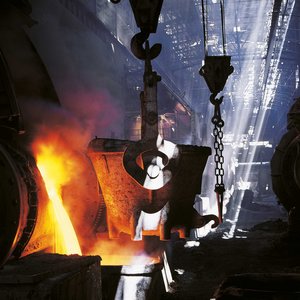
Here the Deutsches Bergbau-Museum Bochum used around 800 m2 of space to present a spectacular exhibition, the result of a nearly ten-year-long, highly successful collaboration with the Chilean mining company CODELCO (Corporación Nacional del Cobre de Chile), a global player.
Copper mining in Chile is on a massive scale, unlike anything seen in Europe: it currently supplies nearly 40 % of the copper used globally.
The main focuses of the exhibition included the modern copper mining industry in Chile, the economic importance of Chilean copper mining, the town of Sewell, a UNESCO World Heritage site, and the successful rescue of the 33 trapped Chilean miners in 2010.
To get to the site of the special exhibition Treasures of the Andes – Chile's copper for the world klick on this link.
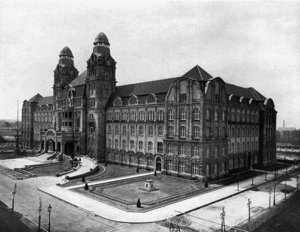
The exhibition took visitors on a journey through 750 years of life and work for qualified miners (Knappen) and other mine workers. The narrative arc went from the leather shoe of a miner from around 1000 AD to a staging of the current debate about the risks of health information sharing for patient privacy ("der gläserne Patient").
To get to the site of the special exhibition On broad shoulders - 750 years of Knappschaft (miners' unions) klick on this link.
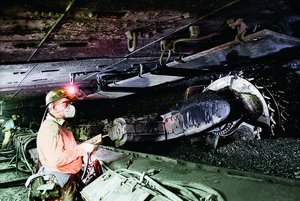
Glück auf! Ruhrgebiet – "Glück auf" is the traditional German miner's greeting, and can roughly be translated as "Good luck". This special exhibition underlined the particular importance of the coal-mining industry for the Ruhr. Coal was the motor for the reconstruction of Germany after the Second World War, and thus made a crucial contribution to the development and prosperity of our country.
This chronologically structured exhibition combined perspectives based on history, economic policy and technology.
To get to the site of the special exhibition Glück Auf! Ruhrgebiet - Coal mining in the Ruhr after 1945 klick on this link.
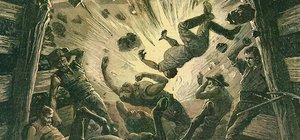
The 10th of March 2006 was the 100th anniversary of the mining disaster of Courrières (Nord-Pas-de-Calais), in which 1099 miners lost their lives. This was one of the worst disasters in the whole history of mining.
German and French historians marked the occasion from a "transnational" perspective, with an exhibition in the Martin Opitz Library in Herne, and an academic conference from 17-19 March 2006 in the Deutsches Bergbau-Museum Bochum.
To get to the site of the special exhibition The mining disaster of Courrières, 1906 klick on this link.
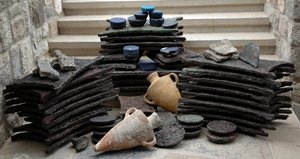
In 2005 our museum celebrated its 75th anniversary. The occasion was marked with a special exhibition about the supply and trading of raw materials in the Late Bronze Age, with a focus on the eastern Mediterranean region and its cultures.
The starting point for the exhibition was the cargo carried by a merchant ship which sank over 3300 years ago off the Turkish coast near Uluburun, and which provided unique new insights into Late Bronze Age trade.
To get to the site of the special exhibition The Uluburun shipwreck – world trade 3000 years ago klick on this link.
